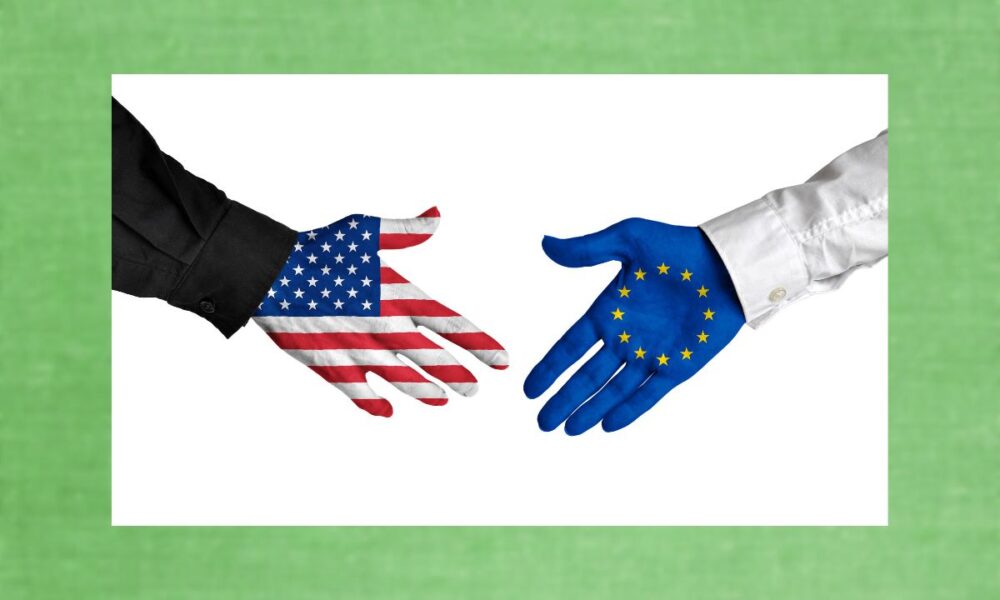The United States and European Union announced a new trade framework Thursday eliminating EU tariffs on American industrial goods while capping U.S. tariffs on most European products at 15%.
The deal includes commitments for Europe to purchase $750 billion in U.S. energy products and $40 billion in AI chips through 2028. The agreement marks a significant shift in transatlantic trade relations, potentially reshaping the world’s largest economic partnership while addressing longstanding U.S. concerns about trade imbalances.
Under the Framework on an Agreement on Reciprocal, Fair, and Balanced Trade, the EU would scrap tariffs on all U.S. industrial goods and provide preferential access for American agricultural products, including dairy, pork, and processed foods. The U.S. would apply either its standard Most Favored Nation rate or 15%, whichever is higher, on EU goods.
Certain critical products would receive exemptions from the reciprocal tariffs. These include aircraft, generic pharmaceuticals, and natural resources like cork.
The framework addresses contentious Section 232 tariffs on automobiles, with the U.S. agreeing to cap combined rates at 15% once the EU formally introduces implementing legislation. Steel and aluminum tariffs remain under discussion for potential cooperation on market protection measures.
Energy cooperation forms a cornerstone of the deal. The EU pledged to buy American liquified natural gas, oil, and nuclear products worth $750 billion over the next three years, plus invest $40 billion in U.S.-made AI chips for European computing centers.
European companies would invest an additional $600 billion in strategic U.S. sectors through 2028. The EU also committed to substantially increase military equipment purchases from American defense contractors.
Both sides agreed to tackle non-tariff barriers, including mutual recognition of automobile standards and streamlined agricultural certifications. The EU promised to address U.S. concerns about regulations on deforestation, carbon border adjustments, and corporate sustainability requirements that could restrict trade.
The agreement includes provisions for strengthening supply chain security and aligning export controls against third countries. Both parties committed to protecting labor rights and avoiding customs duties on digital transmissions.
Implementation requires both sides to document the agreement according to their internal procedures. The framework represents what officials called “a first step” that could expand to cover additional areas over time.


